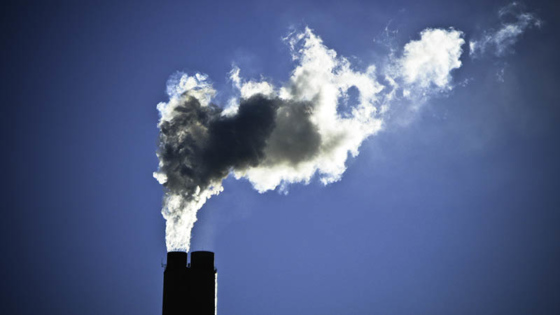This post is also available in:
Spanish
Never before, since the revolutionary triumph of 1959, had there been in Cuba a public protest of the scale of the one that took place last Sunday, July 11. Thousands of Cubans, of all age groups and social classes, in more than 60 localities on the Island, went to the streets to express their discontent and make their voices be heard. This event far exceeds the magnitude of the protests that took place on August 5, 1994, both in the number of participants and their national scope. The government responded with a “combat order” that activated coercive actions to contain the protests, leading to an unequal confrontation between government supporters and unarmed protestors. The government then proceeded to disconnect Internet connection throughout the Island with the objective of preventing Cubans from organizing again. These events have generated an indeterminate number of detainees, many injuries, and one confirmed death.
The causes of this event stem from the paralysis and deferment of internal reforms; the government’s rigidity to “stick its ear” to the ground and hear the demands of an educated and plural citizenry that for a long time has demanded dialogue and solutions. In addition to these, shortages of medicine, food, and other basic items; the inflation caused by the process monetary and exchange unification; the prolonged power outages caused by the shortage of fuel; the creation of a foreign exchange market which the entire population does not have access to; the devastating effects of the pandemic on the economy and tourism; and the impact of social media.
On the other hand, we witnessed a shock of external events linked, above all, to the Venezuelan collapse and the application of sanctions under the Trump administration, which precisely looked to encourage a social disruption within Cuba. The more than 240 sanctions, united to the traditional structures of the embargo, cut the flow of foreign exchange to the Island, strangled remittances, closed the travelling between the United States and Cuba, increased the persecution of Cuban transactions and assets, and penalized the shipment of fuels. Whether intentionally or collaterally (it does not matter), the fact is that these sanctions ended up eroding, in a demolishing way, the quality of life of Cuban citizens.
It is also worth mentioning the deterioration in the pandemic situation in the last few weeks, especially in the province of Matanzas. The Island had already reached its highest number of Covid-19 cases a couple of days prior to the protests. However, “humanitarian intervention” and “humanitarian corridor” began to be used on social media and in media outlets that dealt with Cuban issues. These conversations quickly turned towards the need for “military intervention”. Everything shaped up towards becoming the “perfect storm”, which resulted with thousands of Cubans going out to the streets.
The reaction from authorities of the Island after the protests, blaming the government of the United States for this event, placed the official institutions almost in a “parallel world”. Despite the hopes that Cuban-American right-wing groups and politicians had of promoting social unrest in Cuba—the same groups that pursued it vigorously under the Trump administration by mobilizing financial, media, and IT resources —no foreign government, opposition movement, or group of civil society of the Island, has the political and logistical capacity to bring thousands of Cubans out into the streets in such a spontaneous, synchronized, and massive manner. The accumulated effect of a prolonged internal crisis and its multidimensional character played a decisive role in the protests. Understanding the key elements of this event is essential if one would want to develop political solutions for this situation as soon as possible.
The events that have taken place have had an impact, and will impact the future, on the ability of Cubans to generate national consensuses. It is enough to take, as a minimum example, the pronouncements of some of the most important Cuban musicians: Leo Bower, Chucho Valdés, Eliades Ochoa, José María Vitier, Adalberto Álvarez, el Grupo Van Van, Carlos Verla, Leoni Torres, Cimafunk, Daymé Arrocena, Liuba María Hevia, etc. In their pronouncements, there are various common elements: a positioning to the people, the outright rejection of the use of physical violence by authorities, and the evidence of a profound personal suffering, which is extensive to all Cubans these days. While it was already difficult to work to build common agendas in Cuba before, from now on it will be much more difficult.
How should the government act in the face of this conflict? How should it handle the legitimate claims of the protestors? It would be essential to convene a national dialogue process, the immediate cease of the army of violence against the defenseless citizenry, and the respect of the human right to peacefully protest. Everything that has happened must be directed through the paths of politics with uppercase, transforming frustration, pain, and anger into a proposal for the future and reconciliation amongst Cubans. Those arrested should be released and the forces of law and order should be in charge of guarding institutions and facilities.
This is the only pathway, as illusory and naïve as it may seem, to give a positive turn to these events. Would the Cuban government be willing to do so? What would be the implications of not managing what happened politically? Surely, the results would be disastrous. The future of Cuba lies in building a framework of freedom that includes all Cubans, no matter how they think and wherever they live.
Likewise, it is incumbent upon the Biden administration to rebuild the commitment of the United States with the Cuban people. How should it achieve this in the current circumstances? The democratic administration just announced that remittances to Cuba will not be reinstated. It could be a temptation to the keep the sanctions in place to “heat the pot” and see “what happens”. This would be a serios mistake that could lead to scenarios of widespread violence and chaos, which will not be good for anyone. It is imperative, in the short term, to open channels of diplomatic dialogue between both nations and implement a set of measures that will have a rapid and large-scale impact on the humanitarian dimension of the Cuban crisis.
A possible question, on this point, would be whether the above is politically possible in the current circumstances of US domestic politics. From a political pragmatic point of view, there could be many paths to follow. However, given the humanitarian situation that the Cuban people are in, the honorable, just, and ethical step to take is to help. We need humans alive in order to later on talk about human rights. Remittances and consulate services continue to be plausible goals that would help alleviate the medicine, food, and basic needs shortages among Cubans. In a context of great polarization and confrontation among sectors of the American people, President Biden came to the White House with idealistic agenda to “restore the soul of the nation”. It is precisely that idealism and altruism that is needed to avert, as soon as possible, the events taking place in Cuba.
Translation by Dylan Gervasio
RELATED LINKS:
Shifter: “What these protests have made clear is that the Cuban people are suffering terribly”
Shifter: “La administración de Biden tiene que prestar atención [en Cuba y Haití].”
Cuba: el Congreso de la resistencia






















